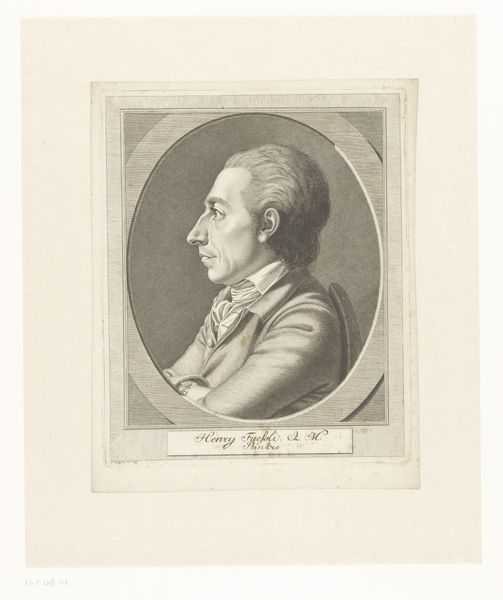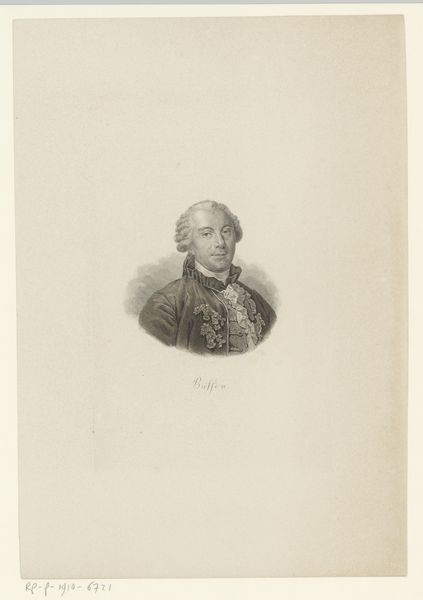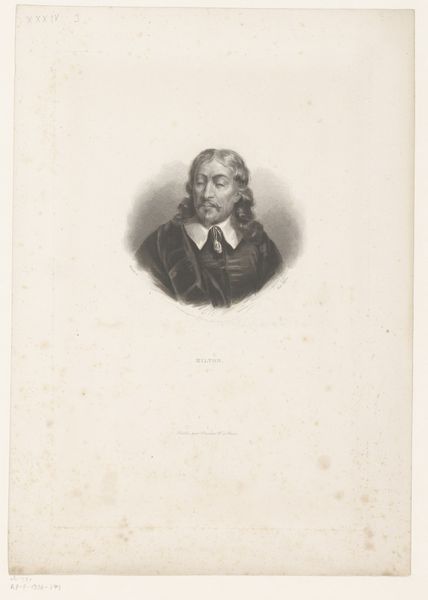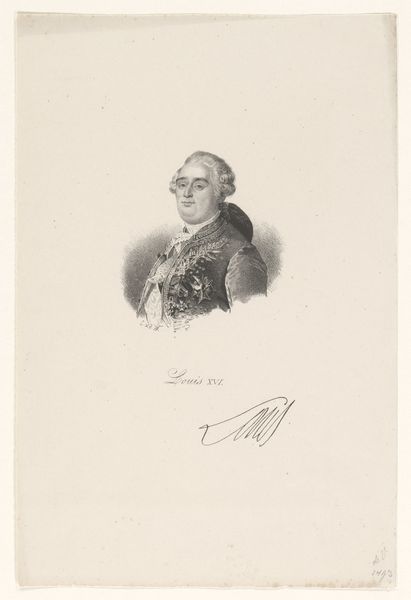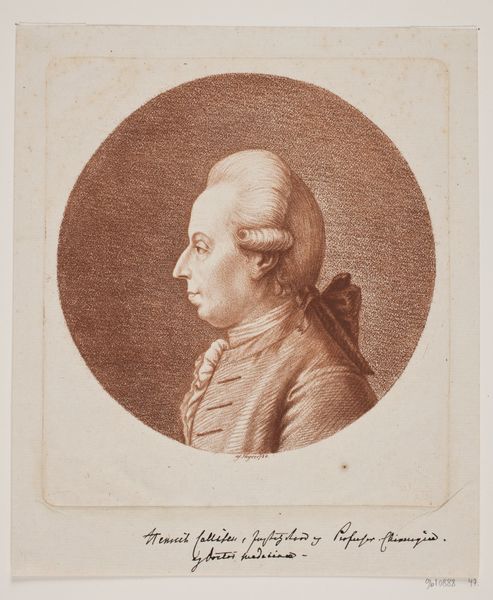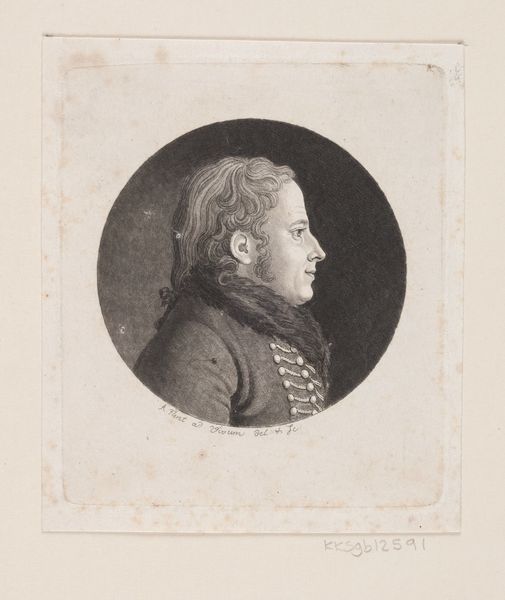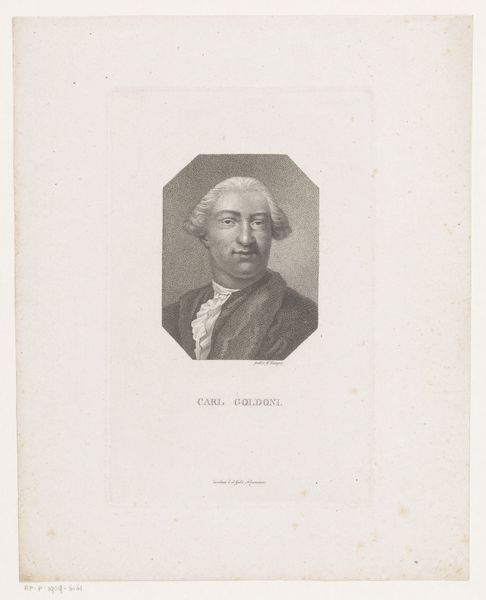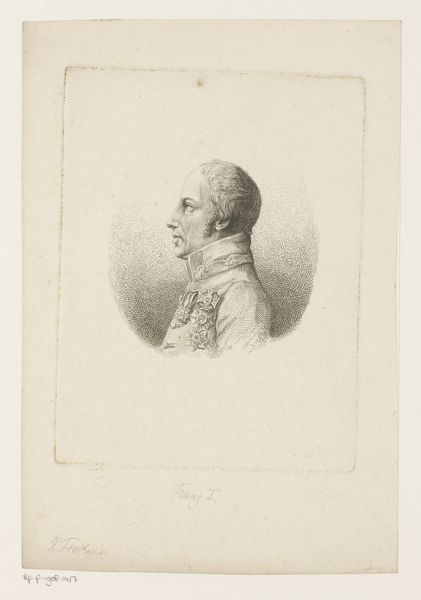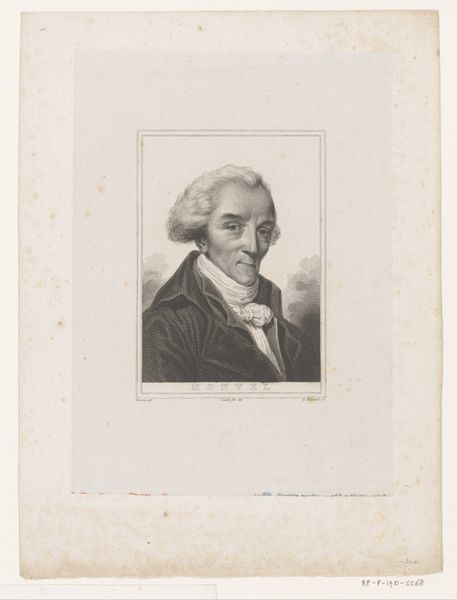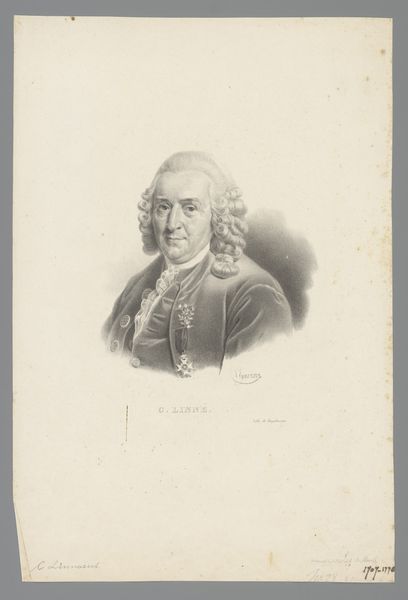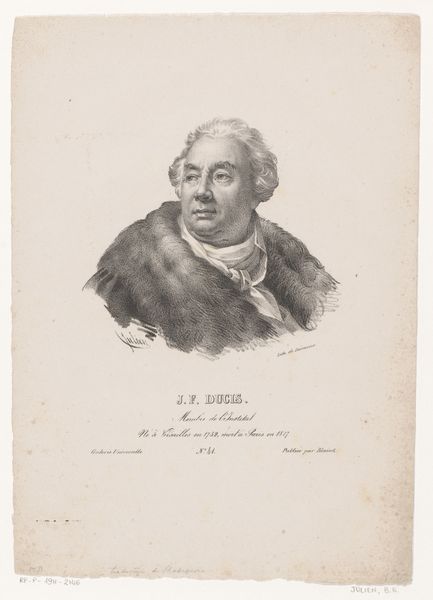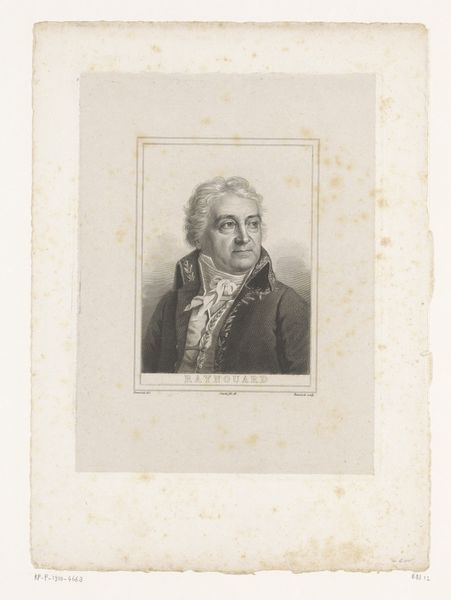
Dimensions: height 199 mm, width 121 mm
Copyright: Rijks Museum: Open Domain
Curator: Here we have Léopold Flameng's "Portret van Lodewijk XVI," created sometime between 1841 and 1910. Editor: It has a sort of haunted quality, doesn't it? The sharp etching against the soft hatching…a real contrast between detail and vagueness. Curator: The artwork seems rooted in the Neoclassical style. We observe a portrait executed through etching, closely resembling a detailed pencil drawing. Editor: Absolutely. Notice how the etching lines define the contours of his face and garment. Also how the hatching suggests both volume and, paradoxically, a fading of the subject, reflecting perhaps his ultimate powerlessness. Curator: The technical execution and reproduction qualities draw immediate attention. Flameng’s expertise is apparent in how meticulously the lines are rendered, mimicking the tonal range achievable in pencil sketches and drawings. Editor: And how poignant to see Louis XVI captured with such fragility of line. Here's a ruler whose reign defined an era, depicted with such ephemeral materials. Curator: One wonders about the political subtext, certainly present despite the classical form. Portraits always negotiate power and representation, and the choice of such transient medium cannot be accidental. Editor: I agree, considering Flameng's historical vantage point, one gets the impression of looking back, reflecting on the Revolution, or even prefiguring its return through these lines of a portrait doomed to eventually vanish from sight. Curator: This piece showcases an incredible formal mastery combined with a powerful evocative aura. Editor: Exactly, I think what makes this so compelling is the interplay between the objective record, and the ghost of a past we cannot retrieve.
Comments
No comments
Be the first to comment and join the conversation on the ultimate creative platform.
